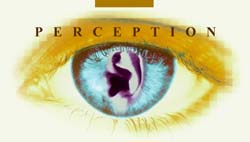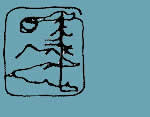
| go to fall quarter |
| home |
| announcements |
| syllabus |
| assignments |
| resources |
| contacts |
 |
 |
Notes for Dave Hickey's essay, "Enter the Dragon: On the Vernacular of Beauty"
“vernacular” is spoken, plain, language – as opposed to the language of the academy. Hickey’s title might have been “…on the plain language of beauty,” or something like that. He’s tipping his hand that he intends to address “beauty” at a street level rather than how it is discussed in ivory towers.
Some of the Artists and paintings mentioned by Hickey:
Giovanni Bellini (1430-1516)
WebMuseum, Paris
Jean Siméon Chardin (1699 -1779) (an Enlightenment
painter):
Biography and
images
"The Jar of Apricots"
"Pipes
and Pitcher"
"The
Silver Goblet"
"The
Silver Tureen"
The art critic Robert Hughes sums up Chardin this way (from Nothing if not Critical):
By general consent, Jean Siméon Chardin was one of the supreme artists of the eighteenth century and probably the greatest master of still life in the history of painting. ...
To see Chardin's work en masse, in the midst of a period stuffed with every kind of jerky innovation, narcissistic blurting and trashy "relevance," is to be reminded that lucidity, deliberation, probity and calm are still the chief virtues of the art of painting. Chardin has long been a painter's painter, studied and when his work was cheap, coIlected by other artists. He deeply affected at least three of the founders of modern art, Cezanne, Matisse and Braque .Van Gogh compared his depth to Rembrandt 's. What seized them in his work was not the humility of his subject matter so much as its ambition as pure painting. The mediation between the eye and the world that Chardin's canvases propose is inexhaustible.
Were he judged merely as a social recorder, he would not have a special place in art history. One does not need to be a historian to know how narrow his field of social vision was. He ignored the public ostentation of his time, as well as the private misery. Most of his paintings are condensed sonnets in praise of the middle path, idealizing the sober life of the Parisian petite bourgeoisie as embodied in his own household. He is said to have had a chirpy sense of humor, and there is certainly a sly irony in his singeries , or monkey paintings, in which hairy little parodies of man play at being painters and connoisseurs.
But of social criticism there is no trace. The nurse in Meal for a Convalescent , who stands opening a boiled egg in a kind of reverential silence like a secular descendant of Georges de La Tour 's saints, is not a representative of the class war; the efforts of some historians to see Chardin's servants as emblems of an oppressed proletariat on the eve of the French Revolution are simply beside the point. A sense of social precariousness is the last thing one could expect to meet in a Chardin. Indeed, one can hardly imagine him working without the conviction that his way of life was immutable - that there would always be nurses to make beef tea, scullions to bargain for chickens, and governesses to scold the children; that the kitchen skimmers and casseroles and spice pots that he so often painted were in some important sense as durable as the Maison Carrée or the Colosseum.
He did not travel for nourishment. Apart from trips to Versailles, Chardin may not have left Paris once in his life. He was entirely a metropolitan man, and this fact seems oddly at variance with his paintings, since, as Pierre Rosenberg remarks, "one would like to imagine Chardin a solitary individual, a provincial."
Chardin's prolonged meditation on brown crockery and the matted fur of dead hares took place in the midst of an efflorescence of luxury art - pink bodies, swirling fronds of gold ornament, rinsed allegorical skies: the Rococo style in all its Gallic glory. It pervaded his milieu, and he did not despise it, but it was quite alien to his temperament. What he craved was neither luxury nor the high rhetoric of history painting, but apprehensible truth, visible, familiar, open to touch and repetition. The truth about an onion could be tested again and again. The truth about a Versailles shepherdess was, to put it mildly, more labile.
His love of truth and nature endeared him to advanced thinkers in France, the encyclopédistes in Denis Diderot's circle. Detecting a moral value in Chardin that was lacking in Boucher, Diderot became his chief intellectual supporter. "It is the business of art," he argued in 1765, "to touch and to move, and to do this by getting close to nature." Chardin epitomized that ambition at work: "Welcome back, great magician, with your mute compositions! How eloquently they speak to the artist! How much they tell him about the representation of Nature, the science of color and harmony! How freely the air flows around these objects!"
Few painters have ever had such a press as the one that, interrupted by a few decades of posthumous neglect, greeted Chardin from Diderot, the Goncourt brothers, Gide, Proust and dozens of others. And what is rarer, their praise was deserved. Chardin had two remarkable gifts. The first was his ability to absorb himself in the visual to the point of selfeffacement. Now and again, as in his Basket of Wild Strawberries - a glowing red cone, compressing the effulgence of a volcano onto the kitchen table, balanced by two white carnations and the cold, silvery transparencies of a water glass - the sense of rapture is delivered almost before the painting is grasped.
But the fervor of this image, almost literally a contrast of fire and ice, is comparatively rare in Chardin's output. Generally his still lifes declare themselves more slowly. One needs to savor his Jar of Apricots , for instance, before discovering its resonances, which are not only visual but tactile: how the tambour lid of the round box accords with the oval shape of the canvas itself and is echoed by the drumlike tightness of the paper tied over the apricot jar; how the horizontal axis of the table is played upon by the stuttering line of red wineglass, fruit, painted fruit on the coffee cups; how the slab of bread repeats the rectangular form of the packet on the right, with its cunningly placed strings; and how all these rhymes of shape and format are reinforced by the subtle interchange of color and reflection among the objects, the warm paste of Chardin's paint holding an infinite series of correspondences.
It is as though Chardin extended his ideal of the family to include groups of objects as well as people. The props of his still lifes, which were also the normal appurtenances of his home life, become like familiar faces: the patriarchal mass of his copper water urn, raised on a squat tripod; a white teapot with a rakish finial; the painted china that signified his growing prosperity; and so on down to the last stoneware daubiére, all signifying a world into which the eye could move without alienation or strain.
This patient construction, this sense of the intrinsic worth of seeing, combines with Chardin's second gift: his feeling for the poetic moments of human gesture (rather than the didactic ones, as in Greuze). It permeates his genre scenes and portraits, especially the portraits of children; the gentle muteness Diderot perceived turns into a noble ineloquence, as though Piero della Francesca were visiting the house. Chardin's absorption in the act of painting paralleled the absorption of children in their games, which he painted. One has only to look at the figure in his portrait Little Girl with Shuttlecock - the expressionless face and white shoulders sitting on the stiff bodice like ice cream on its cone; the sequence of forms pinned together by accents of blue on her cap, her dress, her scissors ribbon and the feathers of her shuttlecock - to realize the truth of Rosenberg's insight: "The world that Chardin imposes on his figures is a closed world, a stopped world ... a world at rest, a world of 'infinite duration.'" Rarely, in painting after Chardin, would one find this blend of intimacy and decorum.
Caravaggio (c.1571-1610)
"The
Madonna of the Rosary"
Caravaggio was a revolutionary in his turbulent and violent life as well as in his art. In intentional opposition to bygone epochs, he used the overwhelming presence of the personae in his paintings to achieve the requisite (during the Counter-Reformation) intense effect on the viewer. His particular artistic devices were vehement chiaroscuro contrasts, providing figures and objects with a sharp physical presence never seen before and a rendering of the observed that approached veracity. This realism, as trivial as it may have seemed to Caravaggios critics, is actually derived from the spiritualism of a subtle understanding of art. The enthroned Madonna advises St. Dominic to distribute rosaries among the people, who are crowded about the saint. Taking part in this supernatural-natural event are not just those found within the picture itself. The observer is drawn into the action as well, through the directional gesture of St. Peter Martyr on the right and through the invitation of the donor on the left, to take cover under the protective mantel of St. Dominic. While the (painted) worshippers see only the saint, the faithful viewer standing in front of this painting experiences within earthly reality the tangible results of supernatural grace. He is drawn towards Christ the Redeemer standing exactly in the pictures central axis and the interceding Mary and Dominic. Exact details of the provenance of the painting, the donor and its first intended location are still unknown. The picture was probably executed in Naples, only to be given to the Dominican Church in Antwerp by a group of artists, including Rubens and Jan Bruegel, around 1620. It was acquired by Emperor Joseph II in 1781.
"David
and Goliath"(the head is a self-portrait)
"Narcissus"
(study the knee)
For more pictures
Baroque art and the period in general
An overview
[You'll note that our friend Rene Descartes (1596-1650), with his emphasis on logic, rationality and clarity sits right in the middle of this picture. Also Johannes Vermeer (1632-1675). Maybe this is just an example of Blake's slogan "To generalize is to be an idiot." Maybe it's a sample of the "stylistically complex, even contradictory nature of the period" (which if your skeptical, might strike you as just a fancy art historian's attempt to cover up Blake's point. Or, it might give you a new slant on Descartes, since the whole presentation of the Meditations is stagey and theatrical - Descartes writes it to ask you to visualize him step by step as he makes the whole perceived world including your body disappear into the realm of unknowability - mere hallucination or dream or non-existence - and then brings it back again step by step as really known thanks to his new methods of proof. You might think about this as doing philosophy in a "baroque" style, as a fantastic conjuring act where the perceived world vanishes and then is made to reappear.]
Robert Mapplethorpe (1946-1987)
Biography
One of the artists at the center of a controversy over the funding by the National Endowment for the Arts of work that many Americans thought was disgusting and immoral - in particular Mapplethorpe's Portfolio X show, which centered on nudes posed in male sado-masochistic sex, and photographed in the fashion photography style of his other work.
Samples
of what the pictures looked like, though not the Portfolio X pictures
themselves (flower pictures and nudes, in particular).
Francis Bacon (1909-1992)
Biography and Image Gallery
Joel-Peter Witkin
Biography
and examples of work
Andres Serrano (b. 1950)
"Piss
Christ"